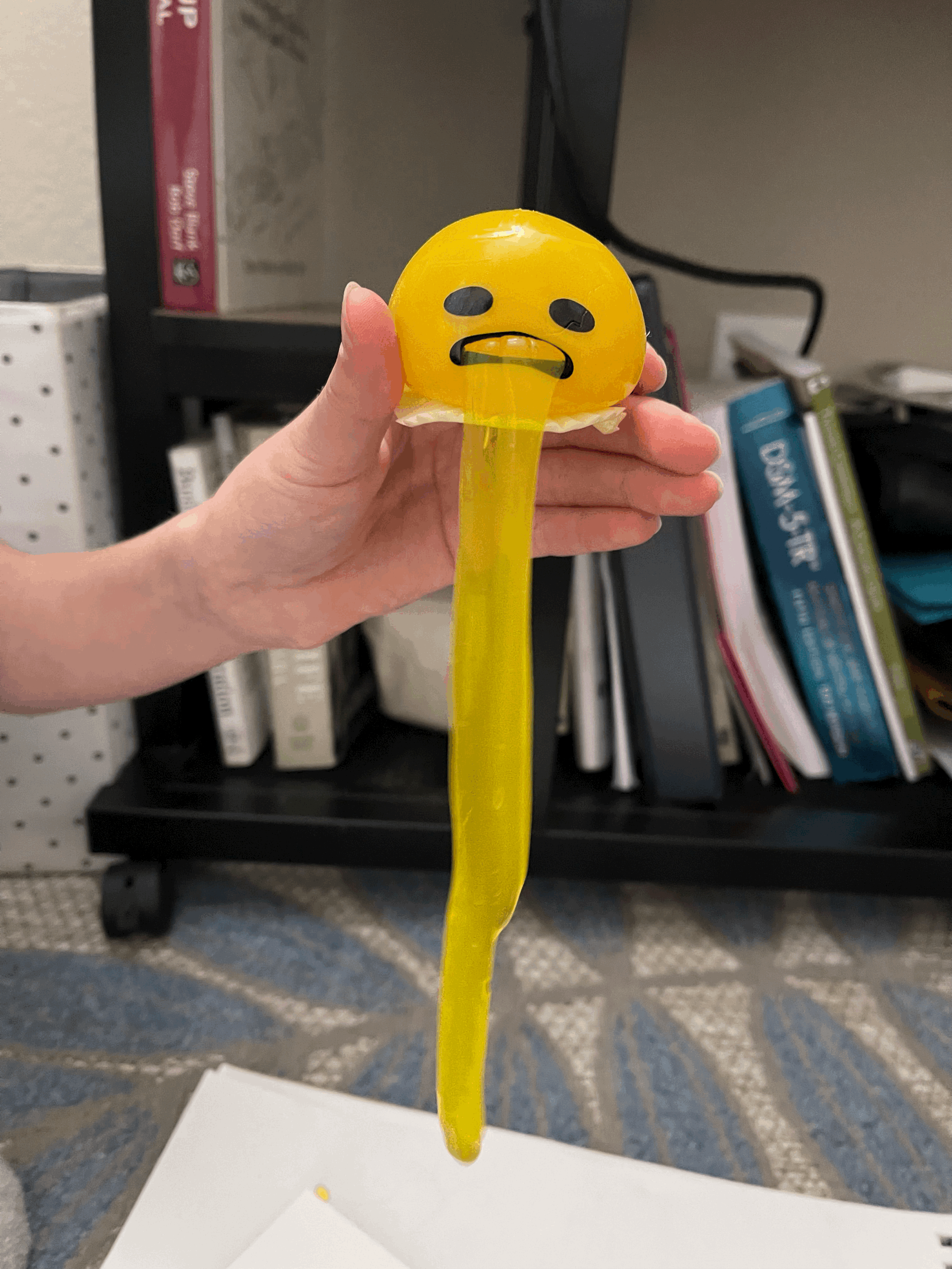
Phobia Treatment
Are you avoiding parts of your life because of fear?
Do you feel like traditional therapy has not helped you expand your life?
Would you like a targeted approach to specific phobias?
Kairos Wellness Center is one of the few centers in Colorado that treats phobias with evidence-based practice. Our clinicians are specifically trained in identifying, targeting, and often eliminating all specific fears.
The most common phobias can vary based on cultural and individual differences, but some frequently encountered phobias include:
Specific Phobias
Specific phobias are characterized by intense and irrational fears of specific objects or situations. Common examples include:
Arachnophobia: Fear of spiders
Ophidiophobia: Fear of snakes
Acrophobia: Fear of heights
Aerophobia: Fear of flying
Claustrophobia: Fear of confined spaces
Hemophobia: Fear of blood
Social Phobia (Social Anxiety Disorder)
Social phobia involves an intense fear of social situations and a fear of being scrutinized or judged by others. It commonly includes:
Public speaking phobia: Fear of speaking or presenting in front of an audience.
Performance anxiety: Fear of performing in public, such as in music or sports.
Dating anxiety: Fear of apps, mixers, and other facilitators of dating experiences.
Agoraphobia
Agoraphobia is fundamentally a fear of anxiety symptoms, such as fainting, panic attacks, emotional dysregulation. In practice, it becomes a fear of being in situations where escape might be difficult or help might not be available. Examples include:
Fear of crowded places or public transportation.
Fear of being in open spaces.
Fear of being outside the home alone.
How does Exposure and Response Prevention (ERP) work for phobias?
ERP is a highly effective form of therapy commonly used for treating phobias and anxiety disorders. Here's how ERP works specifically for phobias:
Understanding the Fear Hierarchy: The therapist works with the individual to create a fear hierarchy, which is a list of situations or stimuli related to the phobia that provoke anxiety. The fear hierarchy ranges from the least anxiety-provoking to the most anxiety-provoking items. Sometimes the fear hierarchy starts with just saying the feared stimuli out loud (“needles,” “dentist,” etc).
Exposure to Feared Stimuli: The individual is gradually exposed to the feared stimuli or situations in a controlled and systematic manner, starting with the least anxiety-provoking item on the hierarchy. Exposure can be conducted in imagination (imaginal exposure) or in real-life (in vivo exposure). At Kairos Wellness Collective, we have a sizable collection of trigger objects for common fears that allow our clinicians to begin habituation to the fear in-office.
Prevention of Avoidance and Safety Behaviors: During exposure, the therapist guides the individual to refrain from engaging in avoidance behaviors or safety-seeking behaviors. These behaviors are actions or strategies used to reduce anxiety in the presence of the feared stimuli. By preventing avoidance and safety behaviors, the individual has an opportunity to experience the anxiety and realize that it naturally decreases over time.
Habituation and Extinction: Through repeated exposure to the feared stimuli without engaging in avoidance or safety behaviors, the individual's anxiety response habituates. This means that anxiety gradually decreases over time as the person becomes more accustomed to the feared stimuli. Through this process, the association between the feared stimuli and intense anxiety weakens (extinction).
Generalization and Maintenance: As exposure progresses and anxiety decreases, the individual learns that they can tolerate and cope with the feared stimuli. This new learning can generalize to other similar situations, further reducing anxiety responses. To maintain progress, individuals are encouraged to continue practicing exposure exercises independently and apply learned coping skills in real-life situations.
Relevant Blog Posts
By systematically exposing individuals to their feared stimuli and preventing avoidance behaviors, ERP helps individuals confront their fears and learn that the anxiety they experience is manageable and diminishes over time.
Over the course of treatment, individuals typically experience a significant reduction in anxiety and an increase in their ability to engage in activities they previously avoided due to the phobia.
It's important to note that ERP is typically conducted under the guidance of a qualified mental health professional who can tailor the exposure exercises to the specific phobia and provide appropriate support throughout the process.
How is Phobia Treatment distinct for children?
Therapeutic Approaches: Therapists working with children often employ age-appropriate therapeutic techniques that are engaging and tailored to their developmental level. Play therapy, storytelling, art therapy, and role-playing may be utilized to help children express their fears and engage in exposure exercises.
Parental Involvement: Parents play a crucial role in the treatment of phobias in children. They are often involved in the therapy process, learning strategies to support their child at home and helping to facilitate exposure exercises. Parents can provide encouragement and guidance throughout the treatment. At Kairos Wellness Collective, parents are required to attend ERP trainings (offered monthly) to assure a supportive home environment for ERP.
Simplified Explanations: Therapists use language and explanations that children can understand, breaking down complex concepts into simpler terms. They may use visual aids or illustrations to explain the nature of phobias, anxiety responses, and the rationale behind exposure-based treatments.
Gradual Exposure: Exposure exercises are typically conducted gradually, starting with less anxiety-provoking situations and progressively moving towards more challenging ones. The pace and intensity of exposure are tailored to the child's comfort level, ensuring that they feel supported and not overwhelmed.
Use of Imagery and Visualization: Children often have active imaginations, and therapists may employ imagery or visualization techniques to help them confront their fears. By creating vivid mental images or engaging in imaginative play, children can practice facing their phobias in a controlled and safe manner.
Rewards and Reinforcements: Positive reinforcement and rewards are often utilized to motivate and reinforce children's progress during exposure exercises. Small incentives or tokens can be given to acknowledge their efforts and successes, providing a sense of accomplishment and encouragement.
School Involvement: If the phobia impacts the child's school life, therapists may collaborate with teachers and school staff to implement accommodations or support strategies. This may include gradually exposing the child to feared stimuli in the school setting or providing additional support during challenging situations.
It's important to recognize that each child is unique, and the specific treatment approach will be tailored to their individual needs, preferences, and developmental stage. Phobia treatment at Kairos Wellness Collective is carefully planned to be both effective and non-traumatic.
ERP is not right for me or my child, what other options exist for Phobia Treatment?
Another treatment for phobias is Cognitive-Behavioral Therapy (CBT). CBT focuses on identifying and challenging irrational thoughts and beliefs associated with the phobia. By modifying negative thought patterns and developing more realistic and adaptive thinking, individuals can reduce anxiety and change their behavioral responses to the phobic trigger.
In some cases, medication may be prescribed to help manage the symptoms of phobias, particularly when anxiety symptoms are severe. Medications such as selective serotonin reuptake inhibitors (SSRIs) or anti-anxiety medications may be used in conjunction with therapy.
It's important to consult with a mental health professional to receive an accurate diagnosis and tailored treatment plan for a specific phobia.
Contact Kairos Wellness Collective today so that our intake staff can provide guidance on the most appropriate treatment options based on you or your child’s needs and preferences.







